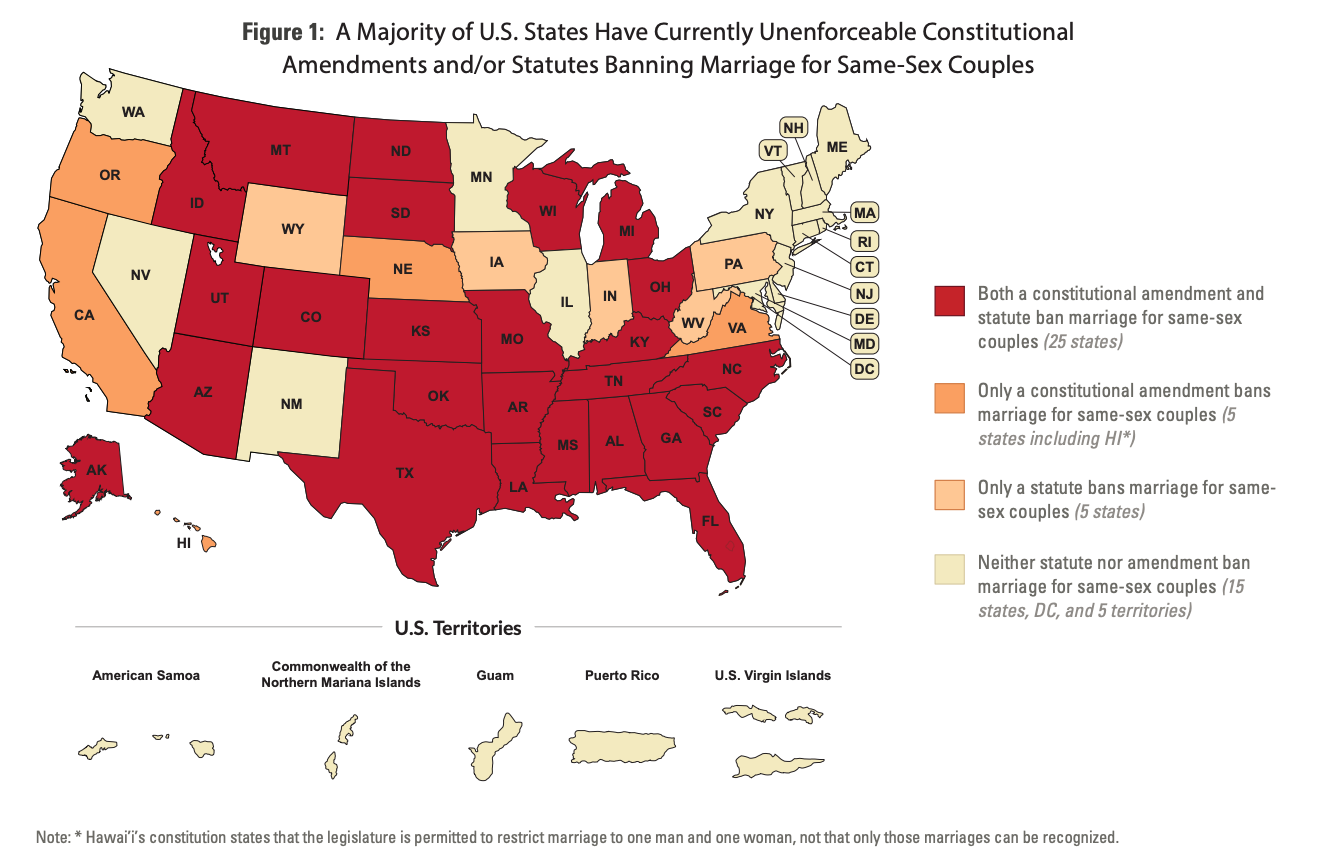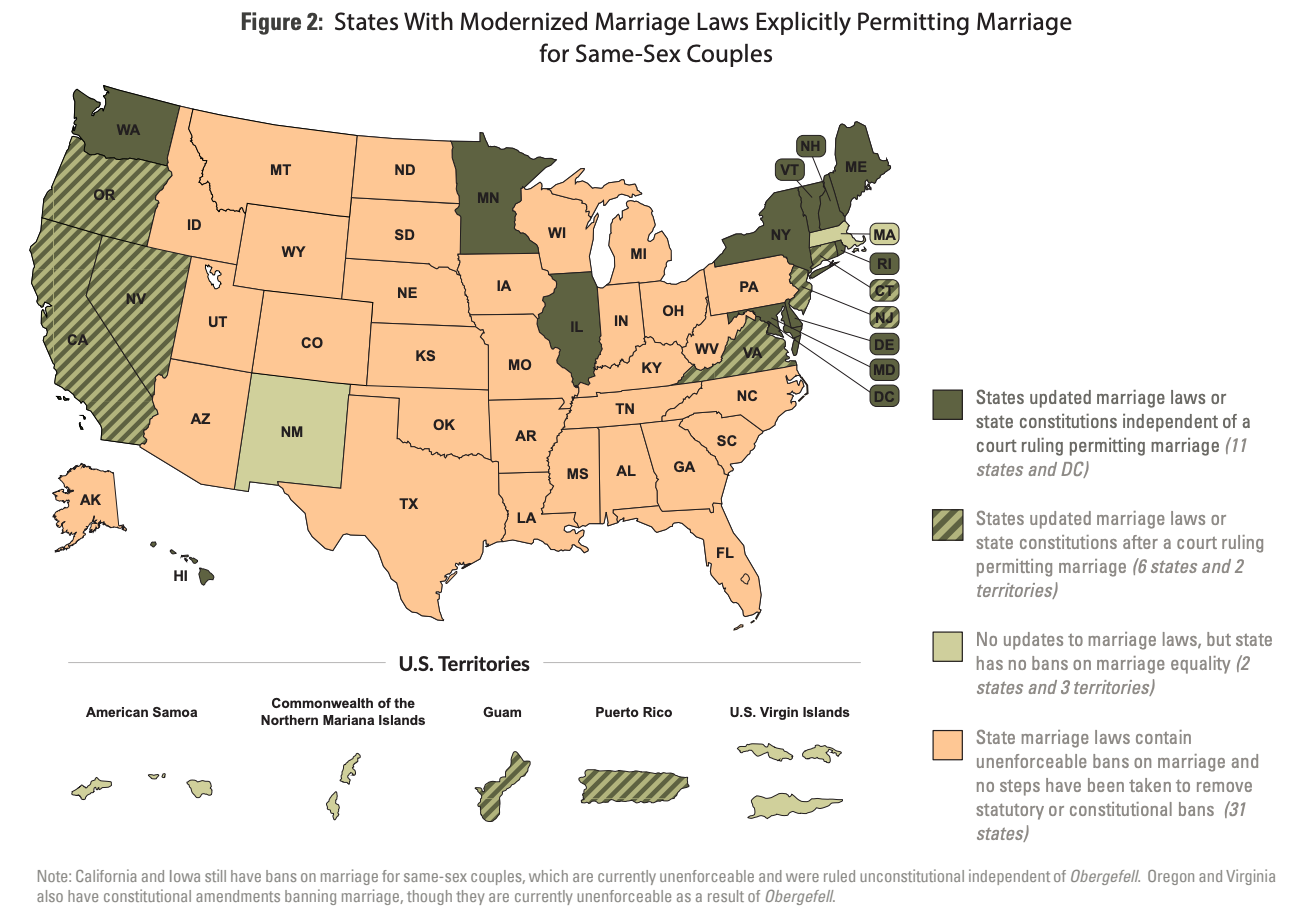MEDIA CONTACT: Rebecca Farmer, Movement Advancement Project
rebecca@lgbtmap.org | 303-578-4600 ext 122
As the Respect for Marriage Act moves through Congress, MAP’s March 2022 report on the landscape of varying state marriage laws around the country is a resource. MAP researchers are available to answer questions and our infographics are available for use. MAP’s report, Underneath Obergefell, explores the patchwork of marriage laws around the country. The report highlights the fact that a majority of states still have existing laws on the books that would ban marriage for same-sex couples – even though those laws are currently unenforceable under the U.S. Supreme Court ruling in Obergefell. If the U.S. Supreme Court were to revisit the Obergefell decision, the ability of same-sex couples to marry could again fall to the states, where a majority of states still have in place both bans in the law and in state constitutions.

The policy landscape for state marriage laws can be broken into four major categories (shown in the image above):
Twenty-five states have both statutes and constitutional amendments limiting the ability of same-sex couples to marry.
Five states have constitutional amendments, but not statutes, prohibiting marriage between people of the same sex.
Five states have statutes, but not constitutional amendments, prohibiting marriage between people of the same sex.
Fifteen states, the District of Columbia, and all five U.S. territories have no statutes or constitutional amendments prohibiting marriage between people of the same sex.
Notably, three of the 35 states with amendments or statutes would remain unenforceable even were Obergefell overturned (California, Hawaii, and Iowa).
Additionally, a number of states have updated their marriage laws to explicitly allow marriage for same-sex couples (see map below)

The implications of the existing marriage laws on the books are varied and eliminating those existing bans is challenging., The process for amending state constitutions is arduous and requires not only legislative action but also approval from voters. And many of the states that still have statutory bans on the books are places where efforts to pass nondiscrimination protections for LGBTQ have faced substantial barriers.
While many steps would need to happen for these bans to be enforceable again, their existence continues to signal the extent to which marriage equality remains a politicized issue.
To schedule an interview with a MAP researcher about this report or other issues regarding LGBTQ equality please contact Rebecca Farmer at rebecca@lgbtmap.org.
# # #
MAP's mission is to provide independent and rigorous research, insight and communications that help speed equality and opportunity for all. MAP works to ensure that all people have a fair chance to pursue health and happiness, earn a living, take care of the ones they love, be safe in their communities, and participate in civic life.



